
Explore the basics of air pressure in this interactive tutorial.
- Subject:
- Earth Science
- Material Type:
- Lesson Plan
- Author:
- RHONDA BURGESS
- Date Added:
- 11/09/2019

Explore the basics of air pressure in this interactive tutorial.
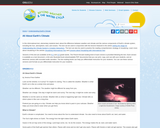
In this informational text, elementary school readers learn about the difference between weather and climate and about components of the climate system. The text can be used to practice visualizing and other comprehension strategies. Available in K-2 and 3-5 grade bands and as an illustrated book as well as a text document, the story appears in the online magazine Beyond Weather and the Water Cycle.
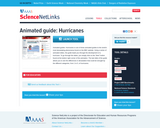
This interactive resource uses a series of animated slides to guide students through the development of a hurricane.

This article includes links to expository text for students in grades K-1, 2-3, and 4-5 about the climate differences between the Arctic and Antarctica.

This resource includes a page of images for each cloud type and four simple hands-on activities. In "Heat Up, Rise Up," students will create a basic thermometer from a straw and investigate the temperature differences as air expands and contracts. In "Rise Above It All," students will model cloud formation by observing how hot water/air rises through cold water/air. In "How Wet is the Air?" students will explore relative humidity. In "How Cold is Enough?" students will continue to investigate cloud formation by inducing condensation on a container of water.

This site features GIFs, Java applets, MPEGs, and Flash animations that illustrate various forms of precipitation and moisture. They include an animation of air parcels and water vapor colliding with condensation nuclei which results in condensation and cloud formation, an interactive precipitation animation applet that allows the user to set wet and dry bulb temperatures to see if snow, ice, freezing rain, sleet, super cooled droplets, raindrops, or drizzle will fall, an animation of lake effect snow over the Great Lakes, and infrared satellite images of water vapor moving across the US. These resources portray a variety of environments and are suitable for use in lectures, labs, or other teaching activities.
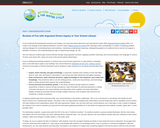
A new instructional model, called Argument-Driven Inquiry (ADI), is introduced to elementary teachers in this article. The author shows how school librarians and classroom teachers can collaborate to help students construct and communicate evidence, or arguments. Evidence buckets, a collaborative activity, and related online resources are presented. The article appears in the free online magazine Beyond Weather and the Water Cycle, which is structured around the seven essential principles of climate literacy.

Students investigate the weather from a systems approach, learning how individual parts of a system work together to create a final product. Students learn how a barometer works to measure the Earth's air pressure by building a model using simple materials. Students analyze the changes in barometer measurements over time and compare those to actual weather conditions. They learn how to use a barometer to understand air pressure and predict actual weather changes.
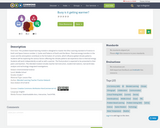
This problem-based learning module is designed to master the Ohio Learning standard of Science in Earth and Space Science number 2, Cycles and Patterns of Earth and the Moon. Thermal-energy transfers in the ocean and the atmosphere contribute to the formation of currents, which influence global climate patterns. Students will be exploring the various factors affecting the climate patterns we experience due to thermal energy. Students will work independently as well as with a partner. The final product is expected to be presented to their peers and teachers. This blended module includes teacher-led instruction, student-led stations, real world data analysis and technology integrated investigations.
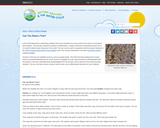
In this nonfiction story, young readers and listeners learn how scientists use cross sections from trees to reconstruct past climates. Versions are provided for readers at two levels, k-2 and 3-5, and in text-only and illustrated formats. The story is also available as an electronic book with recorded narration. An original story is a regular feature of each issue of the free, online magazine Beyond Weather and the Water Cycle. The story can be used in science and literacy lessons and activities throughout the magazine.
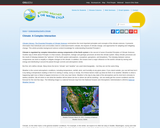
This article continues an examination of each of the seven essential principles of climate literacy on which the online magazine Beyond Weather and the Water Cycle is structured. Principle 2 covers the complex interactions among the components of the Earth system. The author discusses the scientific concepts underlying the interactions and expands the discussion with diagrams, photos, and online resources.
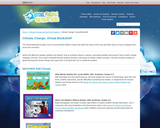
This article features children's literature about weather, climate, and climate change. What’s the difference between weather and climate? How do scientists observe, measure, and predict weather phenomena? How is Earth’s climate changing, and why? This month’s bookshelf will help students develop a solid grasp of weather-related concepts. It will also introduce students to global warming and climate change and inspire them to do what they can to combat the problem.

This video provides information about the causes and effects of Earth's changing climate, specifically focusing on wildlife populations and the impact global warming has on habitats.
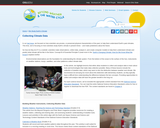
This professional development article identifies resources that show young learners (K-grade 5) how scientists study Earth's climate and make predictions. The online lessons either allow students to collect and analyze data or learn about tools and technologies that make data collection possible. The lessons are aligned with national content standards for science education. The article appears in the free, online magazine Beyond Weather and the Water Cycle, which examines the recognized essential principles of climate literacy and the climate sciences for elementary teachers and their students.

This lesson from Illuminations illustrates how weather data can be collected and examined. In the first part, Collecting and Examining Weather Data, students organize and then examine data that has been collected over a period of time in a spreadsheet. In the second part, Representing and Interpreting Data, students use the graphing functions of a spreadsheet to help them interpret data.
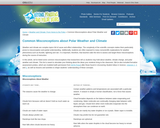
This article lists common misconceptions about weather, climate change, and the polar regions. It provides formative assessment probes and information about teaching for conceptual change.
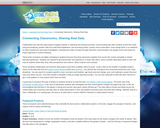
This article describes six collaborative and real data projects that engage elementary students in collecting and sharing local data and communicating with students across the country and world.

This article from the free online magazine Beyond Weather and the Water Cycle provides appropriate science lessons for Grades K-5. The focus is on acquainting young learners with climate-change concepts that are not too complex for their grade level and will not frighten them. In each issue, the magazine develops articles around one of the seven essential principles of climate science. The author believes early lessons about water availability and extreme weather events will prepare students for complex climate concepts they will encounter in later grades.
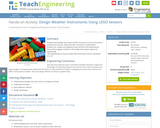
Student teams design and create LEGO® structures to house and protect temperature sensors. They leave their structures in undisturbed locations for a week, and regularly check and chart the temperatures. This activity engages students in the design and analysis aspects of engineering.

Students collect weather data over several days or weeks, graph temperature data, and compare the temperature data collected with long-term climate averages from where they live. Understanding the difference between weather and climate and interpreting local weather data are important first steps to understanding larger-scale global climate changes.